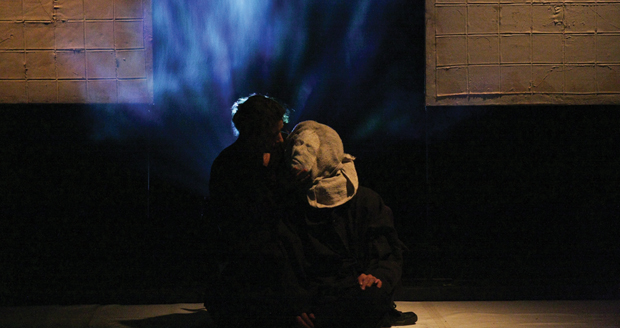Showing @ Traverse Theatre, Edinburgh, Mon 30 Jan only
In an interview with Arthur Holmberg, Heiner Müller said: ‘theatre forces you to struggle with reality’. It is this thought which hammers out the political, philosophical and psychological impressions embedded within our cultural history. It pressures the audience to think, to question and to lose themselves; Compagnie Sans Soucis are loyal to this idea, presenting an intimately mysterious, visually arresting performance of Müller’s text.
Loosely based on Shakespeare’s Hamlet, Müller shrinks the play down to a nine page extrapolation of themes. Identity, drama and destruction all play a part in rebuilding Hamlet from the inside out, with an added political trigger from Müller, writing at a time when Germany was divided into East and West. Nice and light then.
A grid-like floor design surrounded by TV screens seals the stage and provides an ordered space for the destruction to take place. As with all postmodern works, to read more on the subject and on the writer affords more understanding of the final product. Müller believed that ‘there’s no drama without enemies’ – and that’s exactly what Sans Soucis have done: made an enemy out of their audience. Slow, precise choreography mixed with nuanced comedy and a droning, clockwork soundtrack mirror the painful thoughts of Hamlet, his inner-duologue between reason and emotion, madness and sanity, guilt and virtue. This makes the piece inaccessible, thorny and often frustrating, and there’s always a worry that it will drift into tedium.
Yet with flashes of inspiration, Sans Soucis play with light projection and oversized torches to create dancing visual vignettes which alleviate the performance’s bulkiness and – almost literally – lighten the mood. It becomes as much an exercise in experimental storytelling as it does theatricality, with the company’s use of puppetry, mask work and animated shorts helping this along. Credit must be given to Sans Soucis for tackling such a risky text; hard on the outside, warm and soft on the inside, they have crafted a rich blend of visual poetry and postmodern discourse.
